As I peered outside of the balcony of our Thai apartment – far off in the distance – I spotted a plane ascending. As the plane suddenly disappeared into the clouds it hit me I’d soon be leaving Chiang Mai, Thailand in a couple of days. Pensive, I wondered where the time had gone?
For the past several months Chiang Mai has been our home. While traveling in Vietnam, we felt burnt out. We craved a base, a routine and a sense of familiarity. After months of backpacking continuously we hit a point where travel had become tedious. It was a chore. It was no longer fun.

Trying to juggle the demands of working online while backpacking is a balancing act we’ve yet to master; however, we knew one thing with absolute certainty: we needed to slow down.
source: Nomadic Samuel and That Backpacker teaming up on Samuel and Audrey channel
In hindsight, I realized I was living a fantasy believing I could keep up the pace of my backpacking adventures from years past with the added commitments of working remotely. Overly ambitious, we continued on until we finally reached a point where our both our mental and physical health started to deteriorate.
Chiang Mai was our saviour.
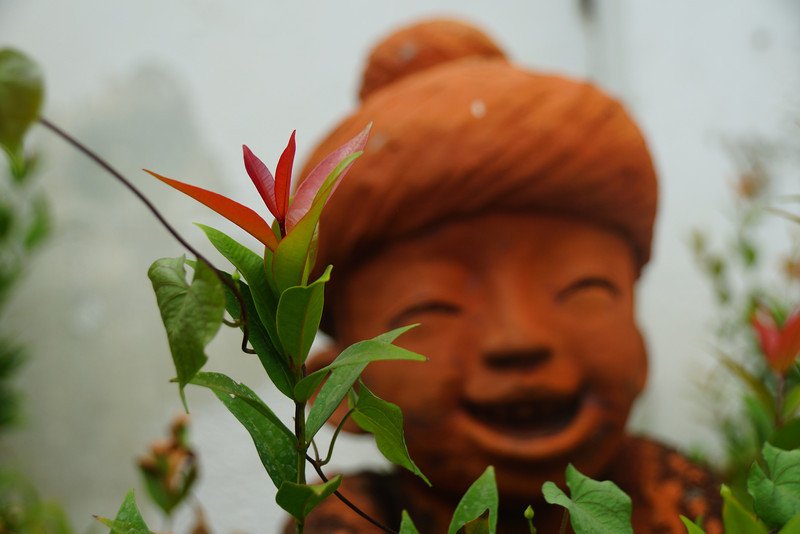
Chiang Mai = The Perfect Base For Digital Nomads
On the first day we arrived it already felt like home. We purchased bicycles. We quickly discovered restaurants we both loved. Instead of feeling a sense of pressure to see and do as much as we possibly could before moving on to the next destination, we felt content wandering around in our neighbourhood.
After months of hearing stories of fellow digital drifters making Chiang Mai their home I was naturally sceptical. It must be over-rated. How can one want to give up the excitement and stimulation of constantly moving from one place to another to hunker down in just one location?
Well, as I’ve come to realize over the past several months there are many reasons that Chiang Mai is the perfect base for digital nomads.
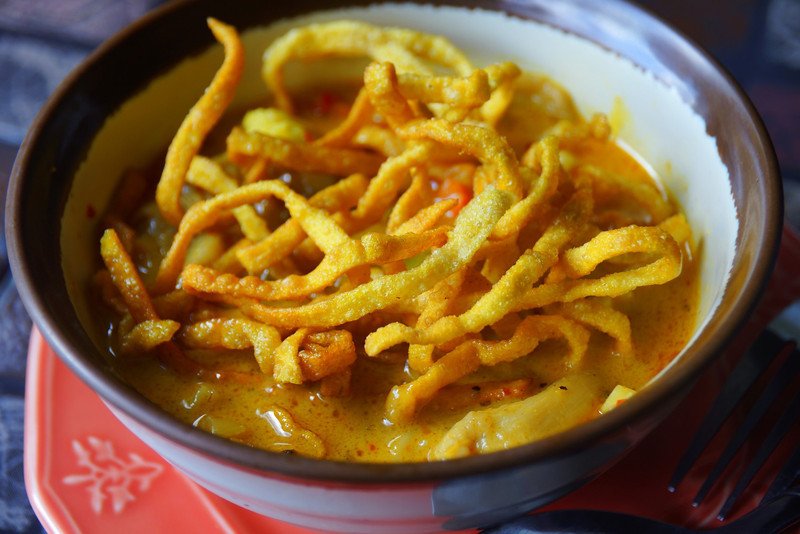
Amazing Thai and International Food In Chiang Mai
source: That Backpacker + Nomadic Samuel via Samuel and Audrey YT channel
Some people eat to live. I live to eat. I couldn’t image myself staying somewhere were I would not be able to indulge my taste buds. Chiang Mai offers a wonderful spread of cuisine ranging from familiar Thai favourites, tantalizing Northern Thai Khantoke cuisine and top notch International food. Whether we were craving a savoury Panang curry or a Mexican burrito, we had options galore at our disposal. Street food stalls offered tasty treats and small meals for mere dollars whereas sit down International restaurants rarely left us with a bill of over 300 Baht (roughly $10 USD).
These are some of our favourite eateries:
source: Nomadic Samuel + That Backpacker via Samuel and Audrey on YouTube
Chang Chalaad: For the best Pad Thai you can’t go wrong visiting this tiny little hole in the wall restaurant located near the northeastern section of the walled city. For dessert indulge in the mango sticky rice. If you’re heading there with a group consider the Khantoke set dinner – a feast you won’t soon forget.
source: Nomadic Samuel and That Backpacker on Samuel and Audrey YT channel
Dada Cafe: This popular cafe was our go-to-place for breakfast and lunch. With options such as curry fried rice, towering sandwiches and rich creamy fruit smoothies, we came back time and again. Our favourite item on the menu was a concoction called Energy Me – a smoothie with copious amounts of fresh coconut, mango and banana.
El Diablo: For quesadillas oozing with cheese, crispy nachos and stuffed – beyond saturation point – burritos, El Diablo was my favourite spot for a Mexican spread.
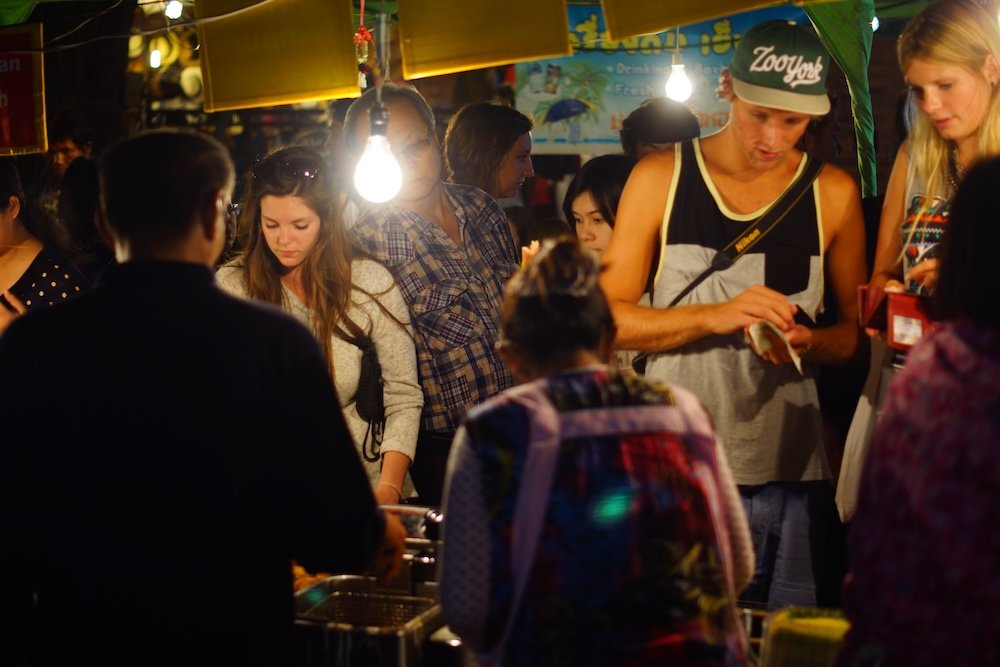
Exploring the Culinary Scene
Chiang Mai’s food scene extends beyond restaurants; it’s an entire culinary adventure waiting to be explored.
- Street Food Markets: The Chiang Mai Gate Market and Sunday Night Market are bustling with vendors selling local delicacies like Khao Soi (a spicy coconut curry noodle soup) and Mango Sticky Rice.
- Cooking Classes: Immerse yourself in Thai cuisine by taking a cooking class at Thai Farm Cooking School or Asia Scenic Thai Cooking School. Learn to prepare authentic dishes using fresh ingredients picked from local farms.
- Vegetarian and Vegan Options: With a significant Buddhist population, Chiang Mai offers numerous vegetarian and vegan restaurants like Anchan Vegetarian Restaurant and Free Bird Cafe.
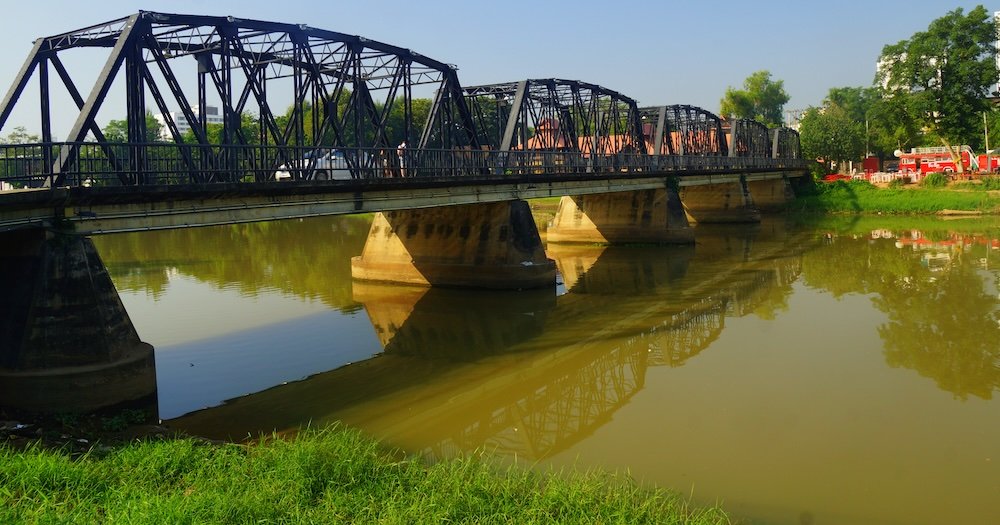
Fast Internet In Chiang Mai
As a digital nomad internet is your lifeline; your river; your bloodstream. Without it (or with a weak connection) your business operations are literally shut down. In our residence apartment we had a reliable connection and when we wanted a change of scenery we could easily find cafes offering free Wi-fi.
Coworking Spaces and Cafes
Chiang Mai has become a hub for remote workers, and the city caters to this community with numerous coworking spaces and cafes.
- Punspace: With locations in Nimmanhaemin and Tha Phae Gate, Punspace offers 24-hour access, high-speed internet, and a community of entrepreneurs.
- MANA Coworking & Cafe: A cozy space combining work and leisure, perfect for networking.
- CAMP (Creative and Meeting Place): Located in the Maya Lifestyle Shopping Center, this space is open 24/7 and provides free Wi-Fi with a purchase.
- Yellow Coworking Space: Known for its modern design and facilities, it’s a favorite among tech startups.
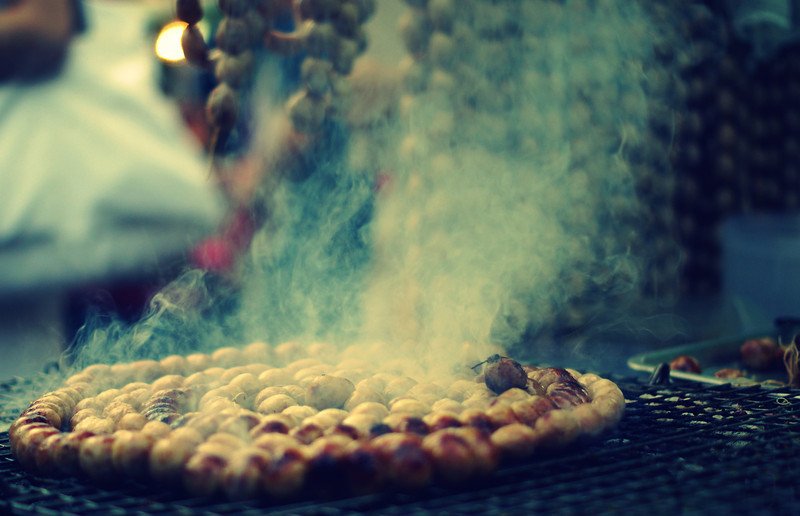
Cheap Apartments In Chiang Mai
Aside from food, having a comfortable/affordable place to hang my hat is absolutely paramount when I’m considering a base. Chiang Mai did not disappoint. Our residence apartment was a spacious studio equipped with a queen sized bed, television, fridge, desk space and air conditioning; moreover, our balcony offered stunning views of the city framed by a mountainous backdrop. A rooftop pool and gym was the cherry on top. A place like this must cost a fortune? We ended up spending under $10 a night for our room along with $2-3 a day on utilities. Definitely, value for money.
Finding the Perfect Apartment
- Popular Areas:
- Nimmanhaemin Road: Trendy and modern, close to universities and filled with cafes.
- Old City: Surrounded by historic temples and walls, offering a more traditional vibe.
- Santitham: A quieter neighborhood with a local feel and lower prices.
- Rental Options:
- Short-term Rentals: Ideal for those staying a few weeks to a few months. Websites like Airbnb and Booking.com are useful.
- Long-term Rentals: For stays over six months, consider contacting local real estate agents or using Facebook groups.
- Amenities to Consider:
- Security: Look for places with 24-hour security or keycard access.
- Facilities: Pools, gyms, and communal areas can enhance your living experience.
- Furnished vs. Unfurnished: Furnished apartments save the hassle of buying furniture.
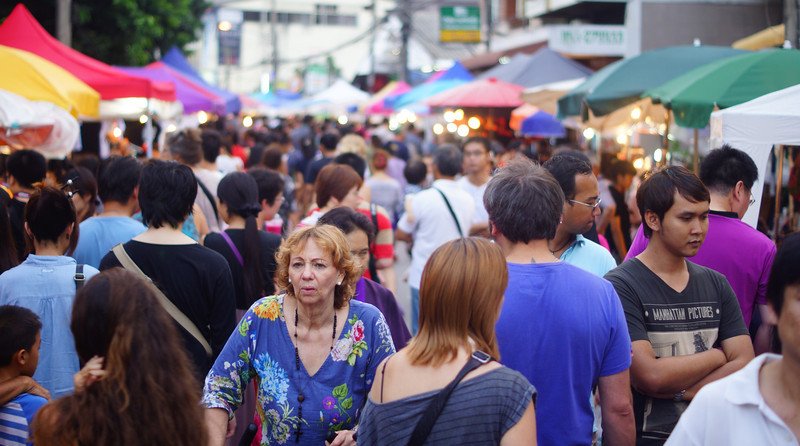
Sense Of Community In Chiang Mai
An important factor in choosing a place to base yourself is a sense of community and belonging. In Chiang Mai you’ll find yourself surrounded by like minded individuals working remotely, teaching and/or starting up businesses. With such an entrepreneurial spirit it’s inspiring to meet up with other expats pursuing a location independent lifestyle. Having the opportunity to bounce ideas off of one another certainly kept me on track with my goals and overall focus.
Networking and Social Events
- Meetups and Workshops: Regular events on topics like digital marketing, coding, and personal development.
- Language Exchanges: Improve your Thai or help others with English at events like Chiang Mai Language Exchange.
- Social Clubs:
- Chiang Mai Expats Club: Offers monthly meetings and social events.
- Outdoor Enthusiasts Groups: Join hiking, biking, or climbing groups to explore nature and meet people.
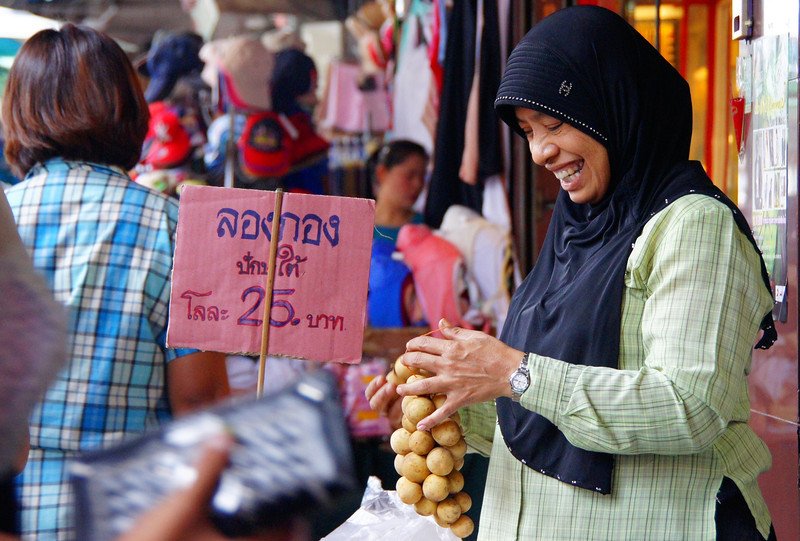
Chiang Mai Charm Factor
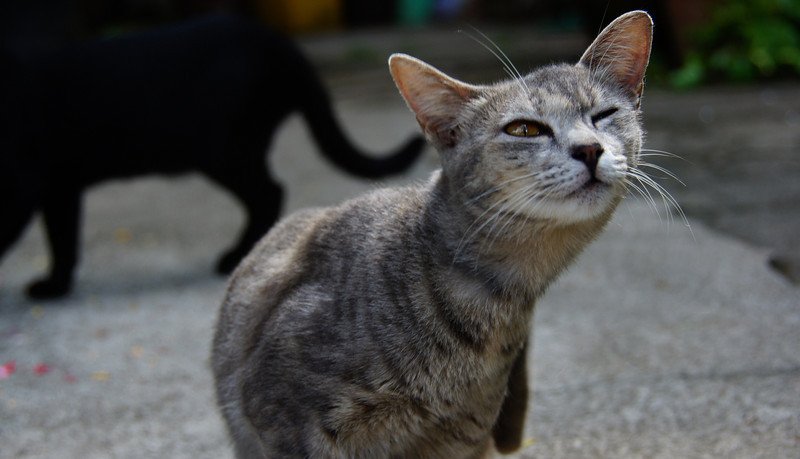
Chiang Mai will charm your pants off. With its laid back pace of life you’ll find yourself rubbing elbows with robed monks as you meander down serpentine side streets in search of a quaint little cafes. For the culture vulture, weekend markets and a regular stream of festivals and events will tickle your every fancy. For the party animal, pulsating nightlife is available where an endless flow of Chang beer is on tap.
I was fortunate enough to make Chiang Mai my home for several months. I’m eager to return next year for another stint with my parents. During my time in Chiang Mai I was able to stay on top of work online, feast on an incredible spread of food, live in comfortable apartment and connect with new friends. I ended up spending a mere faction of what it cost – on a monthly basis – compared to backpacking. For less than $1000 a month we lived in Chiang Mai experiencing a high quality of life. For the digital nomad, backpacker, retiree, traveller or aspiring entrepreneur I can’t think of a better place to be.
Cultural Attractions
- Temples (Wats):
- Wat Chedi Luang: Known for its massive chedi (stupa) that was once the tallest structure in ancient Chiang Mai. Participate in a monk chat to learn about Buddhism.
- Wat Phra That Doi Suthep: Perched on a mountain overlooking the city, it’s one of the most sacred temples in Northern Thailand. The climb up the 306-step staircase is both a spiritual and physical journey.
- Museums:
- Chiang Mai City Arts & Cultural Centre: Provides insights into the city’s history, culture, and development.
- Lanna Folklife Museum: Showcases traditional Northern Thai life through exhibits of clothing, tools, and art.
Festivals
- Loy Krathong and Yi Peng: Participate in releasing floating baskets and sky lanterns during this enchanting festival in November. The sight of thousands of lanterns illuminating the sky is unforgettable.
- Songkran (Thai New Year): Held in April, it’s the world’s biggest water fight. Join locals and tourists in splashing water to wash away the previous year’s misfortunes.
- Flower Festival: Held in February, featuring vibrant parades, floral displays, and beauty pageants celebrating the region’s botanical beauty.
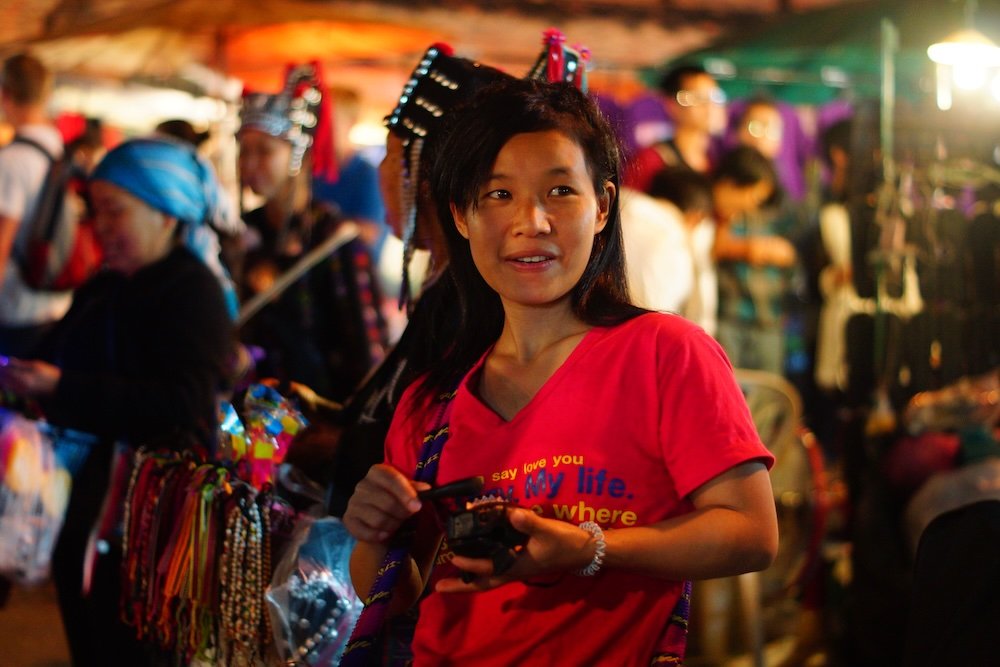
Nightlife
- Riverside Bars: Enjoy live music and riverside views at venues like The Riverside Bar & Restaurant and Good View Bar.
- Nightclubs: Places like Zoe in Yellow and Warm Up Cafe offer dance floors, DJs, and a lively atmosphere.
- Jazz Bars: North Gate Jazz Co-Op is famous for its live jazz performances, attracting both locals and expats.
- Night Markets:
- Sunday Walking Street: A pedestrian-only market offering handicrafts, street food, and live performances.
- Night Bazaar: Open every night, it’s a shopper’s paradise for souvenirs, clothing, and artwork.
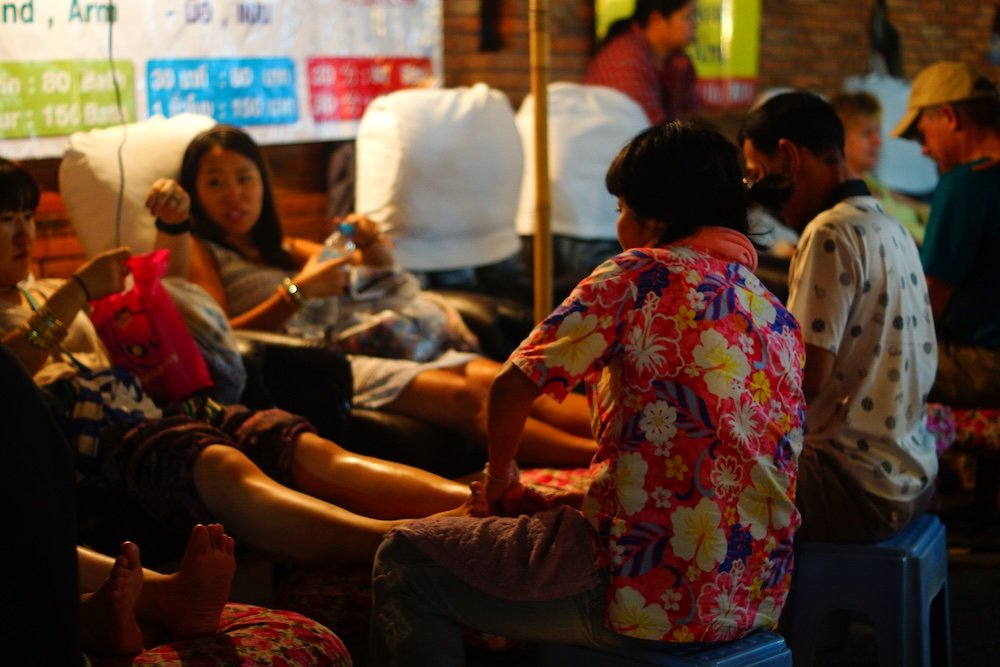
Health and Wellness
Chiang Mai is also a hub for those seeking to improve their well-being. The city offers a holistic approach to health, blending traditional Thai practices with modern wellness trends.
Yoga and Meditation
- Yoga Studios:
- Wild Rose Yoga Studio: Offers various styles of yoga in a serene environment, including Hatha, Vinyasa, and Yin yoga.
- The Yoga Tree: Provides classes and workshops for all levels, along with dance and movement therapies.
- Mahasiddha Yoga: Focuses on spiritual growth through Tantra yoga and meditation.
- Meditation Retreats:
- Wat Umong: A 700-year-old temple in the forest offering meditation classes and retreats. The tranquil setting with tunnels and a large pond enhances the experience.
- Wat Ram Poeng (Tapotaram): Known for its intensive Vipassana meditation courses ranging from 10 days to several weeks.
- Doi Suthep Vipassana Meditation Center: Provides structured meditation courses with accommodation and meals.
Traditional Thai Massage and Spas
- Thai Massage Schools:
- Thai Massage Conservation Club: Offers affordable massages performed by students under supervision.
- Old Medicine Hospital (ITM): Learn Thai massage techniques or enjoy treatments from experienced practitioners.
- Spas:
- Oasis Spa: Luxurious treatments in a tranquil setting, offering packages like aromatherapy, herbal steam baths, and body scrubs.
- Fah Lanna Spa: An award-winning spa with a range of traditional and modern therapies.
- Lila Thai Massage: Offers traditional massages while supporting the rehabilitation of former female inmates.
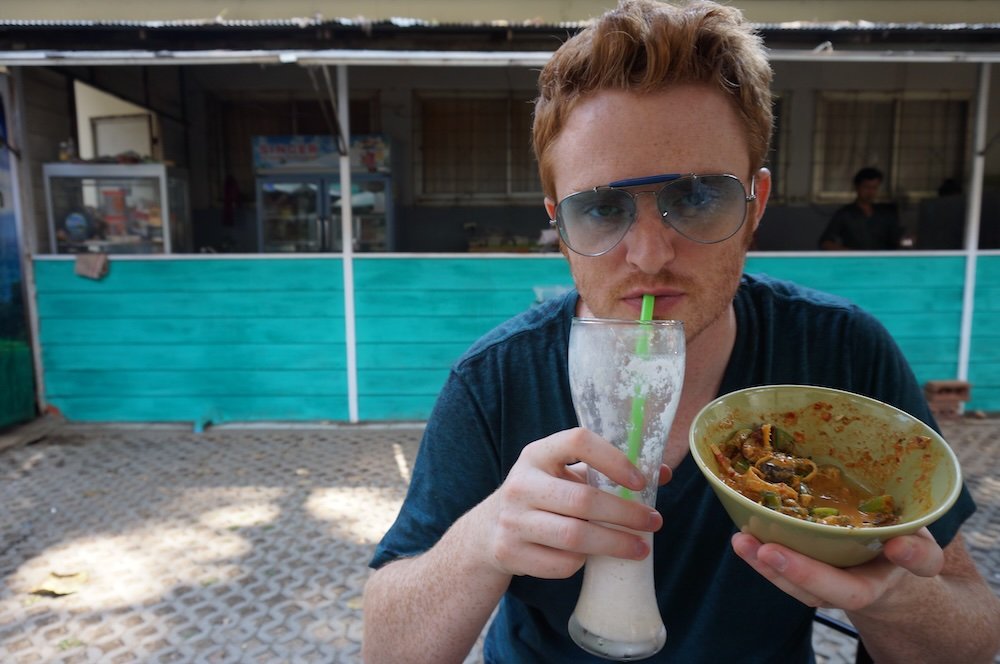
Healthy Eating
- Organic Markets:
- Jing Jai Farmers Market: Open on weekends, featuring organic produce, homemade goods, and artisanal products.
- Chamcha Market: A community market promoting sustainable living and healthy eating.
- Health Food Stores:
- Rimping Supermarket: Stocks organic products, imported goods, and health supplements.
- Oh Kajhu Organic Farm Restaurant: Serves dishes made from produce grown on their own farm.
Fitness and Outdoor Activities
- Gyms and Fitness Centers:
- GoGym: Offers modern equipment, classes, and personal training.
- CrossFit Chiang Mai: For high-intensity workouts and a supportive community.
- Muay Thai Training:
- Lanna Muay Thai Boxing Camp: Offers training for all levels, from beginners to professional fighters.
- Santai Muay Thai Gym: Known for its experienced trainers and authentic training methods.
- Cycling and Hiking:
- Doi Suthep Mountain: Popular for hiking and cycling, with trails suitable for various fitness levels.
- Huay Tung Tao Lake: A scenic spot for jogging, cycling, and picnicking.
Mental Health and Wellness
- Counseling Services:
- Chiang Mai Counseling: Offers professional counseling and therapy services in English.
- NCS Counseling Center: Provides support for individuals, couples, and families.
- Wellness Retreats:
- The Pavana Chiang Mai Resort: Offers detox programs, wellness retreats, and holistic healing therapies.
- Museflower Retreat & Spa: A sanctuary focusing on mind-body-spirit balance through yoga, meditation, and spa treatments.
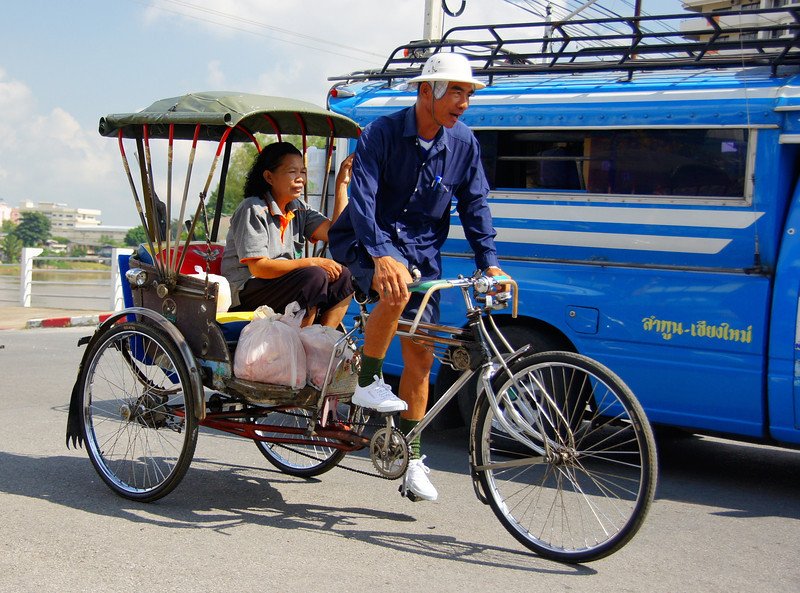
Transportation in Chiang Mai
Getting around Chiang Mai is convenient and affordable. You’ve got options galore catering to different preferences.
Public Transportation
- Songthaews (Red Trucks):
- How They Work: Shared taxis that follow set routes but can be hailed anywhere. Simply flag one down, tell the driver your destination, and they’ll let you know if they’re heading that way.
- Cost: Typically 20–30 Baht within the city, but may increase for longer distances or late-night travel.
- Tuk-tuks:
- Experience: A quintessential Thai mode of transport, offering a fun and quick way to navigate short distances.
- Negotiation: Always agree on a fare before starting the journey to avoid misunderstandings.
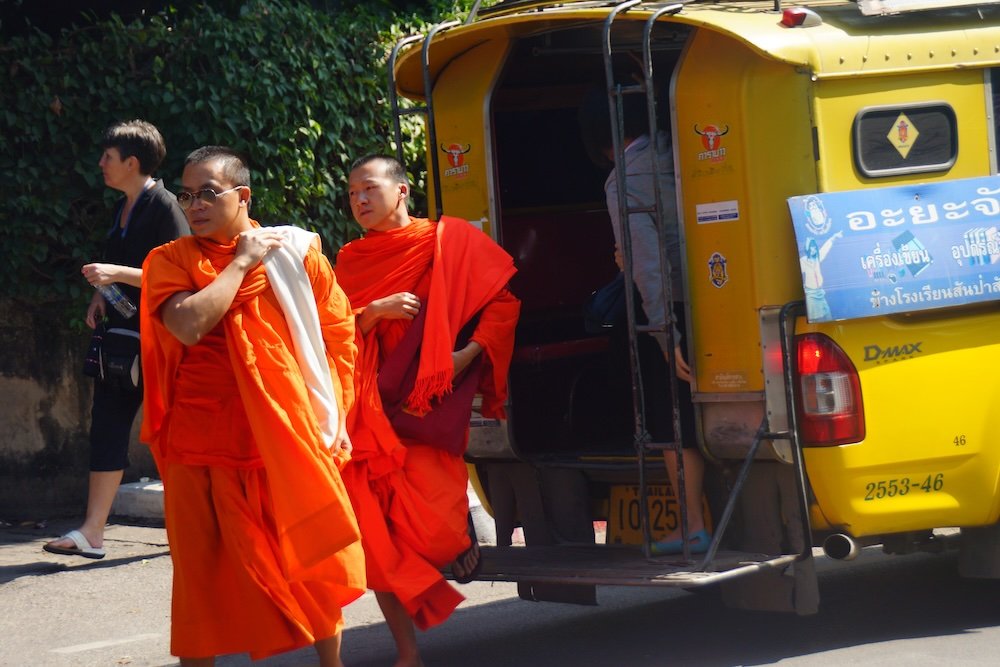
Ride-Hailing Apps
- Grab:
- Services: Offers car and motorbike rides, food delivery, and package delivery.
- Advantages: Transparent pricing, convenience, and cashless payment options.
- Bolt and InDriver:
- Alternatives: Other ride-hailing apps gaining popularity, sometimes offering lower fares.

Rental Options
- Motorbikes:
- Rental Cost: Around 200 Baht per day or 2,500–3,500 Baht per month.
- Requirements: A valid international driving permit with a motorcycle endorsement is legally required.
- Safety Tips: Always wear a helmet, be cautious of traffic rules, and consider insurance coverage.
- Bicycles:
- Ideal For: Short distances within the city, eco-friendly exploration.
- Rental Cost: Approximately 50–100 Baht per day.
- Car Rentals:
- When to Consider: For trips outside the city or if you prefer the comfort of a car.
- Rental Agencies: International companies like Hertz and Budget, as well as local providers.
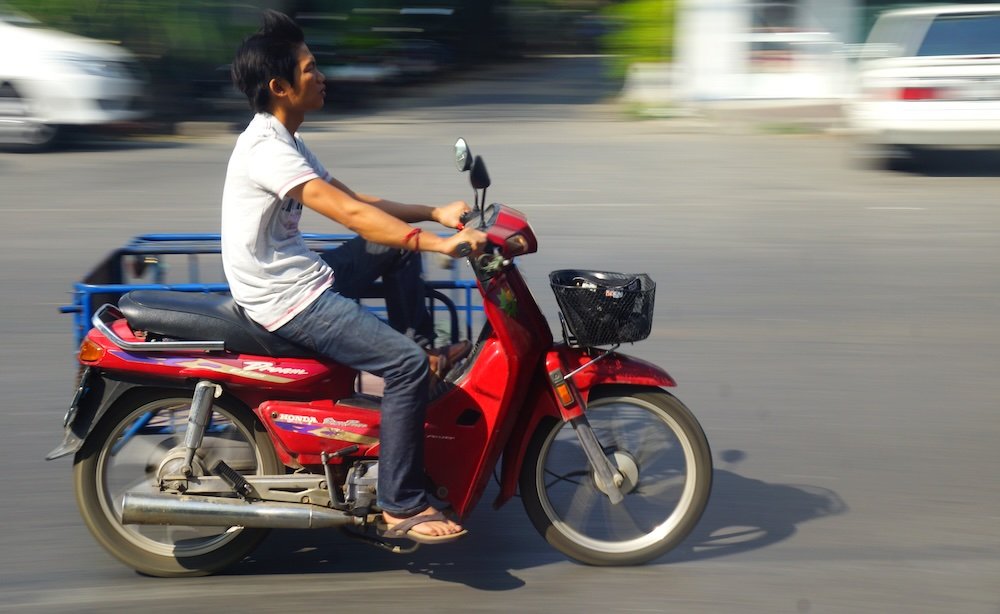
Other Modes of Transport
- Public Buses:
- RTC Chiang Mai Smart Bus: Air-conditioned buses covering main routes with a flat fare of 20 Baht.
- Advantages: Comfortable and equipped with free Wi-Fi.
- Railway and Intercity Buses:
- Chiang Mai Railway Station: Offers trains to Bangkok and other destinations.
- Arcade Bus Station: Main hub for buses to other provinces and neighboring countries.
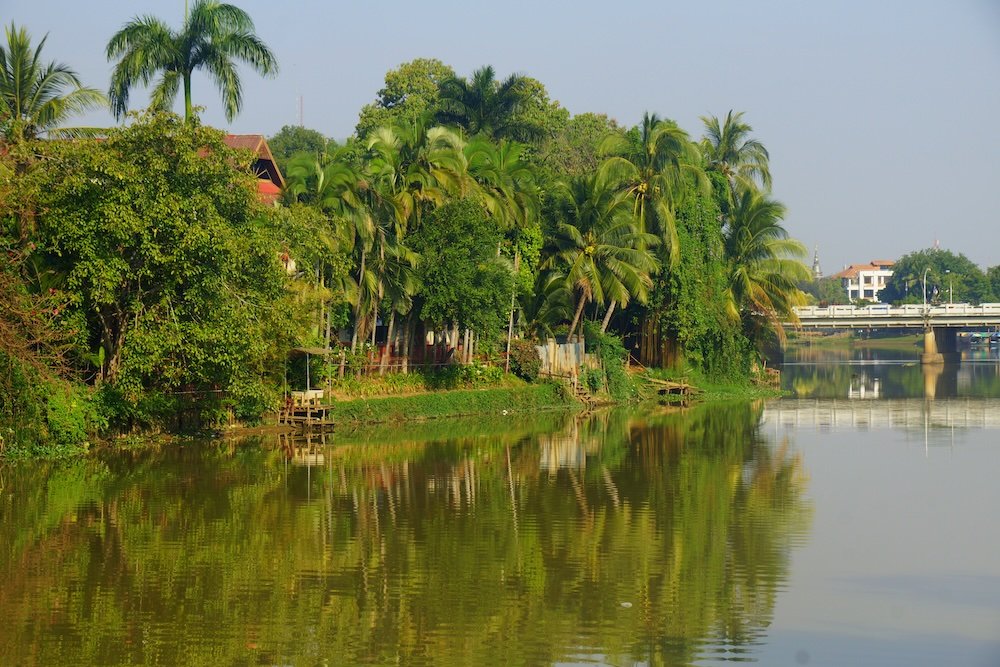
Cost of Living
For less than $1,000 a month, we lived in Chiang Mai experiencing a high quality of life. The city’s affordability is one of its most attractive features for expats and digital nomads.
Typical Monthly Expenses
- Accommodation: $300–$500
- Includes: Rent and utilities (electricity, water, internet).
- Variations: Prices depend on location, amenities, and whether it’s a studio or one-bedroom apartment.
- Food: $200–$300
- Eating Out: Street food meals cost around $1–$2, while dining in mid-range restaurants is about $5–$10 per meal.
- Groceries: Local markets offer fresh produce at low prices.
- Transportation: $50–$100
- Includes: Fuel for motorbikes, public transportation fares, occasional taxi or Grab rides.
- Entertainment and Leisure: $100–$200
- Activities: Cinema tickets, concerts, tours, nightlife.
- Memberships: Gym or yoga studio fees.
- Healthcare and Insurance: $50–$100
- Medical Expenses: Routine check-ups, over-the-counter medications.
- Insurance: Travel or health insurance premiums.
- Miscellaneous: $50–$100
- Mobile Phone Plans: Data and call packages are inexpensive.
- Personal Care: Haircuts, massages, and other services.
- Total Estimated Monthly Cost: Approximately $750–$1,300
Budgeting Tips
- Local Markets: Shop at local markets for the freshest produce and best prices.
- Negotiate Rent: Long-term leases often allow for negotiation on rental prices.
- Avoid Tourist Traps: Prices can be higher in tourist-centric areas; explore local spots for better deals.
Have you visited and/or lived in Chiang Mai? Is it a destination that interests you from a travel perspective and/or as a potential place to settle down?


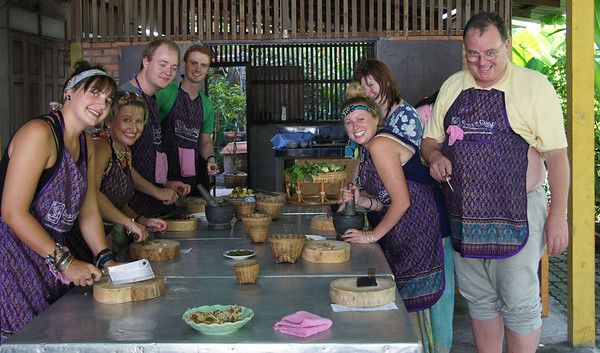
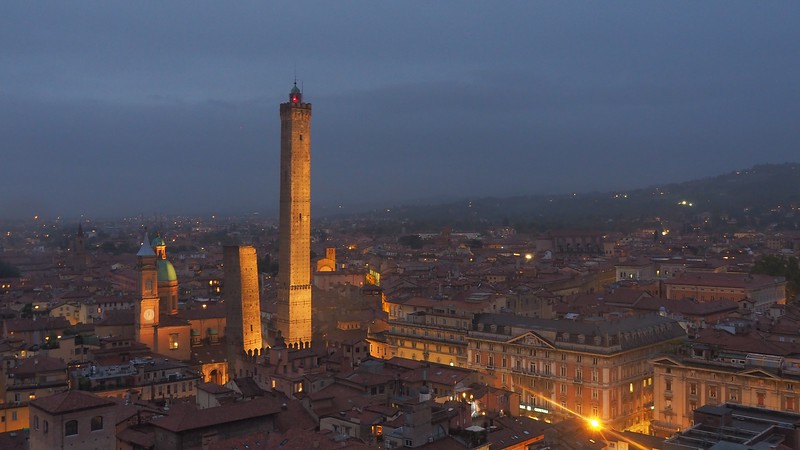
Thanks for a great description of Chiang Mai Mary. I love this place and i am glad to join the club of Digital Nomad.
Hello!!
YOur blog is very interesting, I read the lines about you your accomodation, I like the fact that is quite and with mountain views, I was wondering how good your internet connection was there, if you don’t mind, could you provide please the name of this place? Was this good to work there (internet conection and quiet) Did you hire an internet plan or everything was provided by the place??
Greetings 🙂
Romance is tricky when living internationally to work. Thailand is talked about as a place where the guy has the money and the woman has the younger age or is more attractive.
What about people that want to date educated woman (or vise versa if you like) is that realistic?
Hello, could you share which apartment complex you found, neighborhood it is in, and how you learned about it? Did you use an agent, etc. also what lease lengths were available? Thanks so much.
We stayed at the Smith Residence near the South Gate 🙂
That was my blunder, sorry. I didn’t look over the last comments before asking a redundant question. But you still answered. Thanks for being nice 🙂
No worries! Best wishes moving there soon!
Can I ask which apartments you rented? I am about to move there and the one you picked sounds perfect!
Hi Valen,
We stayed at the Smith Residence 🙂
Thanks, Samuel! I’ll check it out….
Awesome! I definitely recommend it 🙂
Nice quick overview of my favorite city. Chiang Mai is the best.
It’s a little funny to hear about Pad Thai because it’s one of the most dull Thai dishes. Most Thai people I know hardly ever order it.
But my favorite are the cheap vegetarian restaurants.
That’s a good point about Pad Thai, Ryan. The more I think about it, I didn’t notice many Thais eating it.
The best thing in this article is the stretching cat photo. You gave me a good laugh 🙂
Thanks! LOL
I’ve only been away from home for a few weeks but I’m already agreeing with you about the difficulty if not impossibility of combining backpacking with working. I’m in Chiang Mai now and the place is really growing on me – its definitely very liveable. I’m just still a bit reluctant to commit to one place when there are so many interesting places to visit and so little time 🙁
Could I asked which apartment block you chose and how you went about meeting people? Not sure I can work in a backpackers long term but I spent a few days in a dorm here and I’m really missing the social contact.
Hey Stephen,
We lived nearby the South Gate which is a great location and also an area where you can find many serviced residence apartments.
There is a vibrant expat scene here with lots of weekly meetups (documentaries, pub quizzes, clubs, etc). You can definitely settle down here and feel like it is home.
Great post Samuel. All the reasons why we love to be here and why we started from here our life as digital nomads. Plus, for vegetarians like we are, Chiang Mai offers plenty of choices. 🙂
Thanks Gianni,
It’s a wonderful place to be based and I agree with you about the vegetarian food and options!
And that, my friends, is an awesome summary of the myriad of reasons that Chiang Mai is the best palace to be! I came here for 2 weeks so my wife could do a Thai massage course. Nearly 18 months later, we’re finally leaving.
http://www.adventuresofagoodman.com/love-living-chiang-mai-thailand-photography-life/
Thanks Greg!
We’ll be back again I’m sure. I’d say in 30 years from now we’ll be like like those expats who just sit outside at the corner shop drinking beer all day 😉
See you there buddy!
Wonderful, wonderful, totally agree! The WiFi thing was such a shock to me – it’s very strange coming from the States and not having reliable WiFi. Sure, every once in a while you have to call Time Warner cable or something, but that’s like one every few months. Major issues with electricity (Nepal! India!) and WiFi (Saudi!) have made work a struggle and pain. Glad you revealed the reliability in Chiang Mai!
Lovely post and it real does sum up Chiang Mai. It has changed a lot since I arrived 13 years ago, but I personally do not feel that it has not it charm. Chiang Mai is still a great place to live!
What was the name of the apartment you described? I’m here in a guesthouse and looking for a good long stay place. A lot is booked up because of the high season, and then there are a lot to explore but I don’t have a lead. Glad you had a good time, and thanks for sharing your experiences!
Glad you enjoy CM! The wifi speeds there are good considering how you can run into issues around the region. Have you been to Davao? I find the culture, pollution, and general day-to-day life there a bit more enjoyable if you prefer small cities (I prefer Manila to Bangkok, too, which puts me in the minority).
Curious that you didn’t feel at home in Vietnam. I hear that a lot, although I think HCMC is a relatively livable city with some nice green areas.
Hi Samuel, Chiang Mai looks fab. I can’t wait to get there next year. I’ve been to Thailand a few times but I never managed to venture “up North” but we’re doing so on this trip.
Can you get the Khantoke set dinner everywhere or just at particular restaurants?
Hello. Congratulations on the article. I am planing to go to Chiang Mai next year and spend at least 3 months. Do you have any website to suggest about houses and apartments for rent over there? I would really appreciate it.
Really enjoyed reading this post – it took me back to our visit there a couple of years ago – I have recommended Chiang Mai as a must visit to anyone who wants to listen to me babble on about it. I remember wandering around on our first evening and feeling a complete sense of calm. And, for those of you reading this, please try the banana crepes with chocolate sauce and condensed milk, which you’ll find at many street vendors – they are oh so wrong, but delicious. Thanks for taking me back once again 🙂
Having travelled in South America the last few months I’ve come to realise how overlooked language is as a factor for travel destinations and expat bases.
Spanish is essential here is as its the only continent I imagine where English isn’t the first bridge language.
Asia in a way has the benefit of being a popular, exotic travel destination where travelers aren’t obliged to learn the language. Though it does create some distance when getting to know the culture.
I love reading about Chiang Mai, I recently had the chance to visit and so many elements of your blog reminded me – Khao Soi!! Yum. It’s hard to capture all of the emotions and sensations, it’s such an invigorating place. I’d love to hear your thoughts on my Chiang Mai story…
http://saraherhodes.com/travel-tales/wat/
Cheers!
I love Thailand and till now Bangkok is my favorite city to live in. The street food, the atmosphere, the beautiful girls. This city is just perfect for me.
When I read your enthusiasm about Chiang Mai it really makes me want to travel to this city. Maybe I like it even more than Bangkok. But I think it’s totally different and you can’t compare it. The next time I travel to Thailand I will definitely visit Chiang Mai.
cheers,
Sebastian
You guys aren’t in Chiang Mai these days, are you?
We just got here and will be around for a month.. I think it’ll be a nice place to call home, even if for a little while.
Soon… soon I will be joining the bloggers and expats in Chiang Mai… I’ve been fantasizing about it for ages!
I have certainly heard this is teh place to be in the digital nomad world! Well if only it was easy to keep backpacking and working!
If you don’t mind me asking where abouts did you stay? $10 a night with pool and gym sounds great.
I am glad you felt at home there (not just because I am headed there in a few weeks lol). Even when I was young and traveling full-time, I always enjoyed the longer periods of staying put, for all of the reasons you mention here.
I must have just missed you Abby 🙁 Hope we can meet up soon somewhere!
I just arrived in Thailand and was debating heading to Chiang Mai to catch up on projects. It is a must now! Thanks for the info.
That’s awesome Stephen!
I think you’ll enjoy the laid back pace of life, great food and low cost of living. Great place to catch up on work.
We just spent two months living in Chiang Mai. I agree that it’s the perfect place to base yourself as a digital nomad. It was great to just slow down after months of constant travel, and that internet connection? It was like love at first sight 😉
Dean, glad to hear about your experience. We enjoyed it so much we’re thinking of heading back for a couple more months next year.
Wow! I was quite skeptical at first, but this sounds like a really lovely place to recharge your batteries. It’s no fun getting old, eh.
We really loved it Natalia! No, it isn’t very fun 😉
Well you certainly sold me on Chiang Mai. It’s sounds like a fantastic place. For years I have avoided Thailand for many reasons. But here everything I feared about this country is laid to rest. It sounds more like a laid back and liveable kind of town, where the locals are happy to mix with the non locals. I love the food videos best; I too live to eat 🙂
Thanks Sherry!
I hope you’ll get a chance to visit soon. We have plenty of more food videos coming soon 🙂
I would’ve like to visit Chiang Mai. We were only in Bangkok for a short time. But, hopefully one of these days.
Hopefully you can visit soon Nicole. It’s a great reason to head back to Thailand.
Gah! You have me so excited for Thailand, and it’s only 42 days away! I’ll be looking for a base to yeah English and soak in the culture for a bit so I may be choosing Chiang Mai!
That’s great Ryan! I’m sure you’ll love Thailand. Chiang Mai would be the perfect place to do that 🙂
I agree with you when you are writing and traveling simultaneously, internet is the stream, river and the basic thing. I find it sometimes difficult in certain parts of India, especially in mountains where either you get slow or no internet.
Pictures are wonderful and writing as usual personalized and simple. After a long time I again visit your blog and I like it.
Thank you!
It’s amazing how much you appreciate a decent internet connection when you’ve been deprived of it for a period of time.
Awesome post. Chiang Mai is one of those backpacker meccas slash on-the-move-entrepreneurs.
I guess for me, the food is the one thing that may send me packing home. I love experiencing new food and all but sometimes, you just want some comfort food that is on the level of that not-really-authentic chinese food stall in your town or say, pizza done NY style or a nice american-style burger.
havent been but looking forward to.
oh and im still currently stalking your korea posts. going in a few weeks
Thanks Eileen,
Best wishes in Korea! I think if you check out Chiang Mai you’ll be pleasantly surprised by the quality of International food 🙂
OMG, I’m in my 40s, have traveled around the world, and this is the first time I heard someone complain about Chaing Mai food. I think I’d rate it #1-2 of the 30 countries, and more cities, I’ve beemn.
We really loved the food there as well – both local and international.
Loved this little write up on Chiang Mai. That city completely destroys any less-informed stereotype of Thailand. Everything you say makes it a great counter-point to the chaos that is Bangkok and I’m so jealous you had a chance to live there! Did you get the opportunity to get out into the nearby countryside? It’s one of the best parts of being in the North. Cheers!
Thanks John, I agree with you about the charming aspects of the nearby countryside. It’s such a nice alternative to expensive/bustling/chaotic Bangkok 🙂
Great post. I like the lay out. As someone who knows how that burn out can drain you this post sounds so lovely. Thanks.
Thanks Tiffany, it’s really tricky dealing with burnout. I always have to fight urges to keep moving on versus the sensible idea of staying put for a while.
Great info. I liked the videos. Ive never actually had real Thai food after watching them 🙂 They are all too americanized or even Guatemalaized, since they try to make their own versions here
Marina,
Sometimes authentic can be over-rated. The best Thai food I ever had was in Canada of all places…LOL
I love reading this post about Chiang Mai. It sounds like you guys have really gotten to know the area by spending a solid amount of time there. I’m traveling to Thailand this winter and this area is at the top of my list. What were your favorite experiences? Did you explore the surrounding areas as well?
Beyang, best wishes with your upcoming trip. One of the nicest features of being based in CM is that you can easily explore the surrounding areas – Pai, Chiang Rai, etc.
I really wish these kinds of articles didn’t exist. We don’t need more clueless “digital nomads” trying to “rub elbows with robed monks” (which is not only rude for men to do but is a grave offense for women to do).
Yeah Jeff, because I totally meant that in a literal sense as opposed to figurative.
Awesome reply! LOL
This was a wonderful post and has me itching to visit Chiang Mai! Descriptions of the food made my mouth water, especially at Dada Cafe. Descriptions of the expat culture had me yearning to visit and stay for a while, and will put it on my list of places for us to investigate living in in the future.
Thanks so much!
EWM
Thanks Emily!
We really miss the food these days – especially the fresh fruit smoothies 🙂
I’m planning to visit Chiang Mai for the first time in January and can’t wait. First stop will probably be Chang Chalaad. I’d search to the ends of the earth for the best Pad Thai.
That’s cool Josh! I feel the same way about Pad Thai.
I am really curious to try this place out. It’s really hard to find a place to call home, even when it is only for a month or a few. I love that kind of food there and I’m sure to be happy. How long can you stay in that country?
Clayton,
Visa lengths vary. In general, most expats would obtain a 2-3 month Visa in a neighboring country. Georgetown, Penang is a popular destination to get it done.
That sounds pretty good. I’d love to just hang out for 3 months in one spot. That would be pretty nice
Really lovely. Chiang Mai is definitely at the top of places I want to visit for the long term.
Thanks Claire,
Hopefully you’ll get a chance to visit soon.
I’ve been 5 years ago to Chiang Mai. Wonder if it’s still the same. I really loved that place and your article kinda encouraged me to think of a return there and stay a while…
Thanks for the inspiration!
Oh and the food just looks too delicious! By that point, you sold me!
Cheers from Istanbul!
Hey Sab,
I first visited roughly five years ago. I don’t think too much has changed over the years. It’s just as inviting now as it was then. We miss the food the most! Have fun in Istanbul 🙂
Some places, maybe somewhere like Rishikesh in India or Torremolinos in Spain, have so many foreigners staying there that the places have become pastiches of life abroad.
Is there a lot of the original Chang Mai to see and experience?
David,
I agree with you. I think Chiang Mai definitely still has retained some original charms.
What a amazing article on this beautiful town! It sounds blissful! Not only is it very affordable and incredibly well-equipped in regard to wifi, fabulous restos and cafes (as well as a pool and exercise equipment!), it has amazing locals and a brilliant expat community to boot! Thank you so much for sharing your experiences abroad!
Thanks Mary,
It really does have it all in many ways 🙂 We’re really looking forward to returning again next year.
That is a great article. It really makes me want to visit.
Thanks Jen, I hope you can visit soon.
Chiang Mai is an amazing place, i have great memories :)) congrats for the article, ciao Andrea
Thanks Andrea, I agree with you – it’s an amazing place.